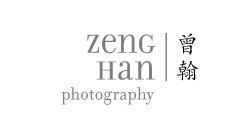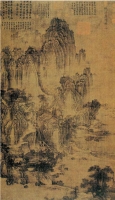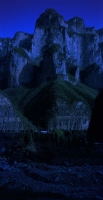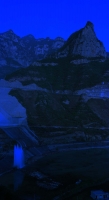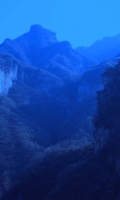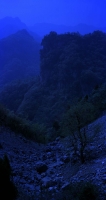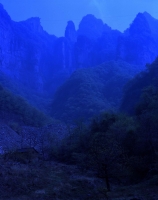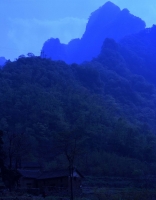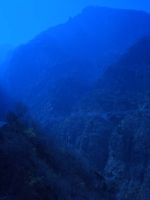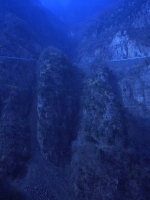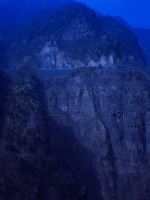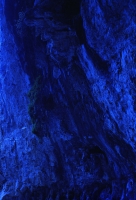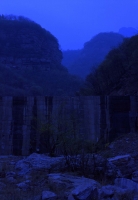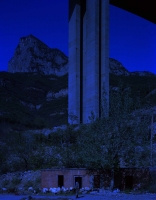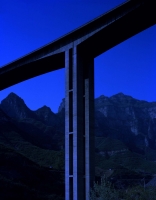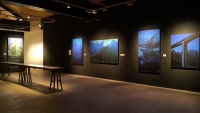真山水·笔法记考
Real Shanshui-The Study of the Bi Fa Ji
五代山水画大师荆浩在《笔法记》中认为:“画者,画也。度物象而取其真。”意即审度表现客观对象的形似,从而去探究把握其内存真实。荆浩所言之真,就是不局限于客观真实的哲思与生命体验的真,格物致知的真。
穿梭于荆浩的隐居地中条山和南太行山,面对与其画作有极高相似度的崇山峻岭,我用摄影穿越时间“格物”以求“其真”。荆浩虚构的导师石鼓岩子对他说:“子既好写云林山水,须明物象之源。”而不断习画到最后则“可忘笔墨而有其真景”。摄影与客观世界之间其实并不存在所谓真实复现的关系,如果以摄影为笔墨,又该怎样去描绘当下的山水呢?在这样的思考下,我尝试用过期摄影胶片的特殊感光色彩去改变所拍摄山水的时间属性,创造出一种错乱和超越时间的混沌感,同时用摄影的机械之眼去进行改变肉眼透视的观看与呈现。客观世界原本并不存在所谓绝对真实,每个人所见的“真实”其实都是通过光和人的视网膜与脑神经一起产生的化学反应来认知的那个有了色彩和形状的“客观真实”,所以我的拍摄的山水,与荆浩所画的山水,虽然在空间中是同一所指,但又因不同的时间与观看,而产生出不同的“物象之源”与“真景”,也许这就是我所要考据与思考的“真”。
山水画之于风景画的区别,就在于对景观的描绘虽可能源自实地风景,但却不仅仅是如实再现,而是要超越视觉经验而转化为更具普遍和终极意义的意象。《真山水》系列沿用了中国绘画史特有的仿作之“谱系”模式,用摄影对山水画史上的重要作品进行实景考据,以拟仿的图像进行跨越时空的解构和重构。
“艺术即历史”(方闻),而“一切历史都是当代史”(克罗齐《历史学的理论和历史》),对艺术史的当代呈现,便是我企图用摄影去调研和书写的当代史。
The great master painter Jing Hao of the Five Dynasties considered painting as “observations of the objects and reflections on its truthfulness (zhen).” He commented on the painting’s capability of completing a verisimilitude representation, through which the observers would be able to gain the inner truth of the exterior. The truthfulness claimed by Jing Hao could be understood as one’s philosophical reflection or emotions toward the world, not restrained to its objective reality. The difference between the Chinese paintings of mountains-and-waters (shanshui) and the so called landscape painting is that the former expresses a transcendent experience that is more universal and would go far beyond the realistic representations and one’s visual experiences.
My series of Real Shanshui continues the artistic practice of studying and copying the master works of past, following the method that roots deeply in the tradition of Chinese art. Through the medium of photography, I am able to revise the lineage of mountains-and-waters paintings established by the ancient masters, and conduct my own research and expeditions to the actual sites appeared in their paintings. By copying and imitating the views depicted by them, I attempt to deconstruct the master works while reconstructing my own versions out of the work of deconstruction.
Wen Fong considers art history as a part of history; Benedetto Croce claims that all history is contemporary history. My aim is write and add my own contemporary notes to the great tradition of the paintings of mountains-and-waters in Chinese art.
